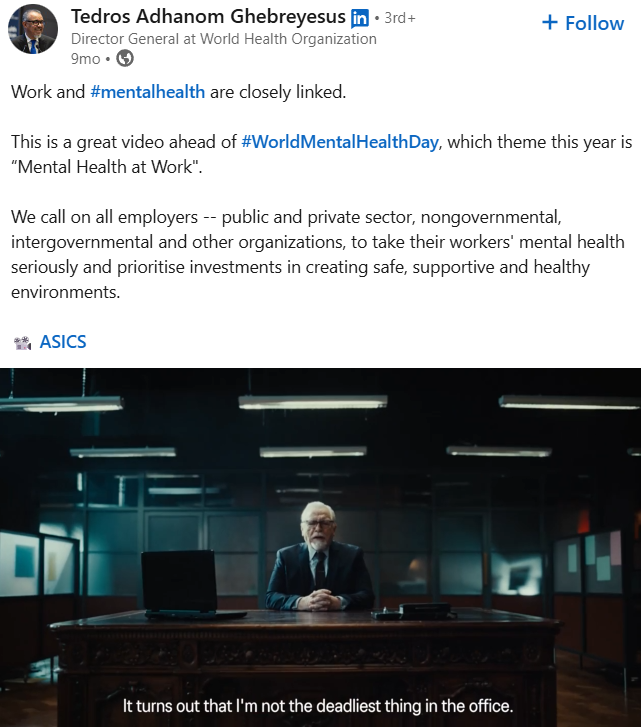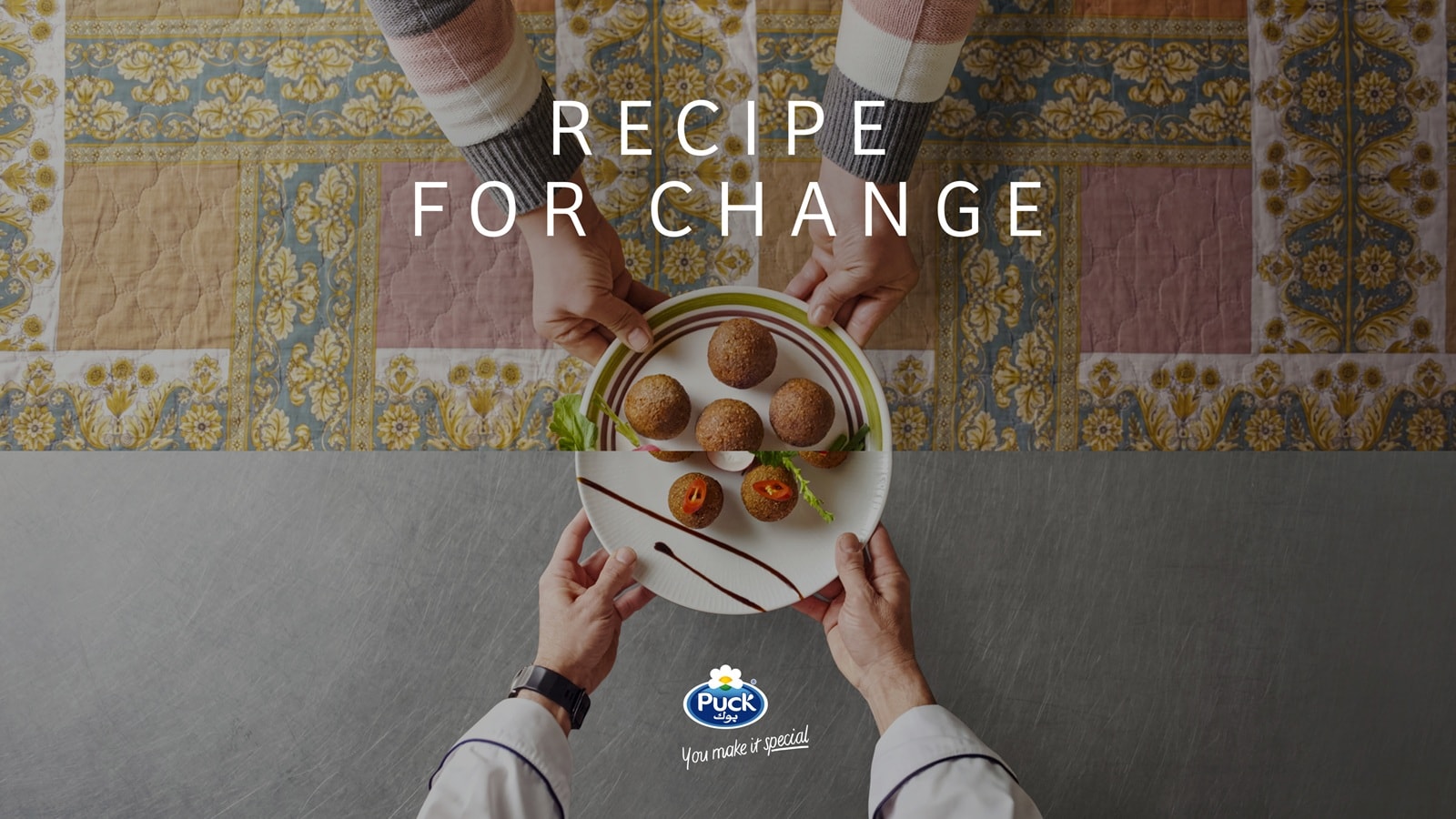What happens when B2B campaigns are both heartbreakingly real and cheekily fun?
Well, apparently, you get the Cannes Lions International Festival 2025. Or at least this is the case for the Creative B2B category at this year's festival.
When we looked at this year's awarded B2B entries, the first thing that came to our minds was contrast.
On one side: a handful of projects steeped in real-world hardship, from war to natural disasters to economic instability, that made us pause and reflect. On the other: lighthearted, almost absurdist takes featuring A-list celebrities that made us giggle in front of our screens.
And, what's more interesting, it's one of the latter that scored the Grand Prix in the category.
But regardless of their focus on either humor or serious real-life issues, they all shared some common themes which were emotional intelligence and human touch.
So let’s take a deep dive into this creative dichotomy, because it says a lot about what B2B audiences want now—and what marketers are delivering. Join us as we have a look at some of the winning work.
Let’s start with two examples that both used celebrities and won big. But their goals—and impact—couldn’t be more different.
To support the launch of Airo - GoDaddy’s new AI-powered tool that builds logos, websites, and marketing assets in minutes - they turned to actor Walton Goggins (of "White Lotus" and "Fallout" fame). The twist? They used Airo to create a real business for him: Walton Goggins Goggly Glasses.
The result was a hilarious, self-aware ad that ran during the Super Bowl, bringing startup culture and digital entrepreneurship into the mainstream B2B spotlight. But, what's more important, the campaign delivered some pretty impressive business results as well:
As the Jury President Wendy Walker (Salesforce) said:
It demonstrated the product by using the product, brought humour and entertainment into a B2B context and delivered real business impact… It proved that B2B can be bold, entertaining and brilliantly effective.
Was it Grand Prix worthy?
Well, we're not sure about the judging process, but apart from the results, this piece provided a somewhat refreshing break from the heavier themes featured in other case studies, perhaps reflecting a collective desire from the jury for some humor amidst global tensions. We will never know.
Is it adressing a real business problem? Most likely so.
Is it showing game-changing creativity, creative excellence or exceptional craft? Probably not.
But it's simple, based on a good insight and relatable to the target audience - and sometimes, it's all it takes to win big.
Meanwhile, ASICS took a slightly more serious route - though not without Brian Cox’s perfectly dry delivery. Their campaign urged companies to introduce a “desk break clause” into work contracts to improve employee mental health.
And it turned out to be a viral hit, being reshared even by the WHO Director General himself:

Some of the results that were claimed in the campaign case study:
Yet, some controversy emerged around the campaign’s metrics— like, for example, whether the claimed impact such as well-being growth could be directly attributed to the campaign.
Still, it did what most B2B efforts don’t: it started a conversation about policy change. And showed potential for long term brand building.
ASICS claims the campaign was a huge success - if you're curious why, here's a case study video that their head of global brand communication director shared on her LinkedIn profile with more results.
Many of this year’s winning campaigns took a different route, highlighting global issues and offering innovative ways and purpose-driven solutions. Here are six standout examples:
During the 2024 floods in Valencia, many local businesses were forced to close. JCDecaux donated its outdoor ad spaces to them, turning screens into lifelines that informed customers which businesses were still open and allowing them to make donations.
Using real-time pet health data collected from smart collars, this campaign created an early warning system for earthquake detection. A seemingly niche idea with both huge emotional and practical impact.
Bars were suffering from low foot traffic and lack of visibility post-COVID. So Heineken decided to focus it's campaign on bars serving their brand, by promoting them as filming locations - redirecting commercial production budgets into these businesses and helping them gain exposure while drawing people back into local venues.
In response to growing inflation, Ziploc gave expired coupons a second life—if people had an old deal, they could use it again by adding Ziploc to their carts. A clever play on preservation (pun fully intended) that aligned the product with consumer needs.
In response to the crisis in Lebanon that displaced 1.3 million people, Arla’s Puck brand brought six authentic home-cooked recipes - each created by a resilient Lebanese woman - into some of the most renowned Lebanese restaurants across the world. Proceeds from each meal ordered helped support Lebanese families, allowing those abroad to give back to those that were left behind.
You can watch the case study video on LinkedIn or Instagram.

To support growers in areas hit by climate change issues affecting coffee production, Nescafé created a real-life innovation - improved varieties of Arabica and Robusta developed by scientists - and distributed them to local farming communities. The plantelets came at no cost and with no obligation to sell the coffee back to the company. To support their growth, a global farmer-to-farmer community platform, Agrinet, was created to enable knowledge sharing and provide growers with regerative agricultural trainings.
The results? Over 300M distributed plantlets, 1.5B hectars of regenerated farmland and almost 1M trainings.
Well, they didn’t just show hardship. They showed how business can be part of the solution.
It’s B2B with a conscience—and it works.
As filmmakers, this one’s very close to our hearts.
This joint project by the Chicago Hearing Society, FCB Chicago and Rakish Entertainment, endorsed by the Academy of Motion Picture Arts and Sciences (yep, the guys behind the Oscars) reimagines the traditional video captions model, involving features such as voice characteristics, tone, and context.
The goal - not to transcribe, but to convey emotion, so that audiences with hearing loss can really feel what’s happening on screen.
It’s super elegant, it changes the status quo, it answers a real need, and it’s proof that accessibility can be a canvas for creativity.
And the impact?
Apart from scoring Bronze prize in the Creative B2B category, it also won three Grand Prix for Brand Experience and Activation, Design and Digital Craft. Talk about success!
Jury President Tara Ford (Droga5 London) put it perfectly:
This has the potential to be applied beyond film to all types of communication and entertainment.
The awarded Creative B2B entries, as in the previous years showcase that brands can explore diverse methods to reach business to business customers effectively. And the real beauty of it is that more and more of them are not afraid of embracing emotional storytelling and creative thinking to do so.
However, here's what we think this year's work submitted to the B2B category proves:
So whether you're creating your next tradeshow video or launching a global rebrand—ask yourself:
What’s the emotion behind the message? And will your audience feel it?
Just drop your details and we’ll craft a B2B story buyers actually care about, handling everything from first concept to final cut. Let’s start in 24 hours!
Start Your B2B Video Project
The Creative B2B Lions were first introduced in 2022. However, the category emerged after years of discussion, having been considered as early as 2013.
Prior to 2022, B2B work was recognized within other categories at Cannes Lions, but the introduction of the Creative B2B Lions aimed to elevate the discipline and recognize the unique challenges and opportunities within the B2B space.
This year’s entries were defined by a striking duality: some campaigns leaned into raw, real-world challenges like war, mental health, or natural disasters, while others took a humorous, even absurd approach—often with A-list celebrities in tow. Despite this contrast, all winning work shared a human-centered focus and emotional resonance.
Absolutely. The best B2B campaigns this year—from ASICS' “Desk Break Clause” to Arla’s “Recipe for Change”—showed that empathy, emotion, and purpose can drive policy change, business results, and brand affinity. Creativity doesn't have to mean gimmicks—it can mean human connection.
Need some actual proof? Here it is:
That B2B advertising and branded content doesn’t have to mean boring. Whether tackling heavy societal issues or delivering laughs at the Super Bowl, today’s B2B campaigns prove you can be bold, emotional, and impactful—all at once.
https://www.lovethework.com/work-awards/results/cannes-lions/creative-b2b
https://www.youtube.com/watch?v=CHbOUpiHiwc
https://www.youtube.com/watch?v=3XFXcBdXqKE
https://www.linkedin.com/feed/update/urn:li:activity:7248007595406295042/
https://www.linkedin.com/feed/update/urn:li:activity:7313286659519709185/
https://www.instagram.com/reel/DH9N0SvvrIH/